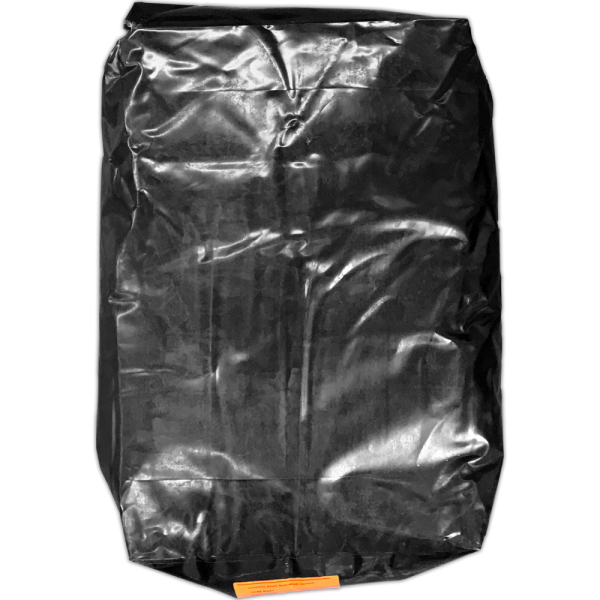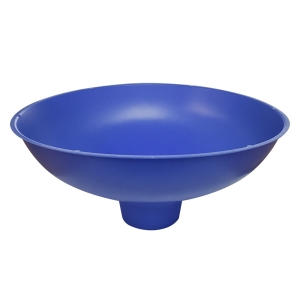Amerisorb Granular Activated Carbon - for Taste and Odor Removal - Half CUBIC FOOT
Amerisorb - Granular Activated Carbon (GAC)
Your ultimate solution for achieving clean, great-tasting water. This premium filtration media is designed to effectively remove impurities, ensuring that every drop of water you consume is pure and refreshing.
Why Choose Amerisorb GAC?
- Superior Filtration: Amerisorb GAC excels in removing chlorine, odors, and unpleasant tastes from water. Its finely tuned pore structure and high catalytic activity allow for enhanced adsorption of trace contaminants, resulting in cleaner, fresher water for you and your family.
- Healthier Water: Healthier Water: By filtering out harmful chemicals and impurities, Amerisorb GAC contributes to better health. It effectively traps organic compounds and chemicals that can affect water quality, making it a vital addition to any home or business.
- Cost-Effective Solution: The simplicity of Amerisorb GAC means no additional pumps or chemical additives are required, reducing both operational costs and maintenance efforts. This makes it a budget-friendly option for achieving high-quality water filtration
- Environmentally Friendly: Made from natural materials such as coconut shells or coal, Amerisorb GAC is an eco-conscious choice for water filtration. It provides a sustainable solution without the safety concerns associated with chemically impregnated carbons.
- Versatile Applications: Amerisorb GAC is suitable for various applications, including residential water treatment systems, aquariums, and industrial processes. Its adaptability makes it a valuable asset in multiple settings.
Factual Highlights
- Composition: Amerisorb GAC is derived from high-carbon raw materials that undergo an activation process to increase surface area, enhancing its adsorption capabilities.
- Performance: Studies have shown that granular activated carbon filters are effective in reducing turbidity and improving overall water quality by removing unwanted particles and contaminants.
- Longevity:With proper maintenance, Amerisorb GAC can last for several months before needing replacement, making it a long-lasting filtration option.
Limitations of Amerisorb - GAC
While Amerisorb GAC offers numerous benefits, it's essential to understand its limitations:
- Not All-Inclusive While effective against many contaminants, Amerisorb GAC may not remove certain heavy metals or microorganisms. For comprehensive filtration, it may be necessary to combine it with other filtration methods.
- Regular Maintenance Required: To ensure optimal performance, regular monitoring and replacement of the GAC are necessary. Over time, the carbon can become saturated with contaminants, reducing its effectiveness.
- Saturation: Over time, GAC becomes saturated with contaminants and will require replacement or reactivation to continue functioning effectively. Monitoring contaminant levels is essential to determine when maintenance is needed.
A cubic foot of Amerisorb Granular Activated Carbon (GAC) can effectively filter approximately 500,000 gallons of water before it needs to be replaced. This estimate is based on the general guideline that each cubic foot of GAC can treat around this volume, depending on the specific contaminants present and the water quality being treated.
Granular Activated Carbon constitutes an excellent filtration media, having a high density with a balanced pore-structure for more efficient absorption.One of the most common applications for Activated Carbon is the removal of the undesirable taste present in many chlorinated water supplies. This taste is the result of the formation of chlorophenols, often present in raw waters that contain phenols and are subsequently treated with chlorine. These phenols are usually the product of industrial waste. Even 0.1 ppm of chlorophenols can result in an undesirable taste. Activated Carbon has for many years been successful in the absorption of orthochlorophenol and the removal of free chlorine from water supplies. The end product is clean, fresh water with no objectionable taste characteristics.
A filter with granular activated carbon (GAC) is a proven option to remove certain chemicals, particularly organic chemicals, from water. GAC filters also can be used to remove chemicals that give objectionable odors or tastes to water such as hydrogen sulfide (rotten eggs odor) or chlorine.
Granular activated carbon is made from raw organic materials (such as coconut shells or coal) that are high in carbon. Heat, in the absence of oxygen, is used to increase (activate) the surface area of the carbon; this is why these filters are sometimes referred to as “charcoal” filters. The activated carbon removes certain chemicals that are dissolved in water passing through a filter containing GAC by trapping (adsorbing) the chemical in the GAC.
It is very important that the type and concentration of contaminants, and average water use, be known in order to determine the correct size and components of the system. All treatment systems require proper installation and periodic maintenance. Eventually, the ability of the GAC to bind and remove chemicals is used up and the GAC needs to be changed. How often the GAC should be changed needs to be based on contaminant levels and water use. While some filters may last for several years if contaminant levels and/or water use are low, higher levels or use may require more frequent change-outs.
| Material | Granular Activated Carbon |
|---|---|
| Size | 1 Cubic Ft |
| Model # | GAC-half |
| Shipping Weight | 15 |
 Amerisorb Granular Activated Carbon - for Taste and Odor Removal - Half CUBIC FOOT
Amerisorb Granular Activated Carbon - for Taste and Odor Removal - Half CUBIC FOOT







Validate your login